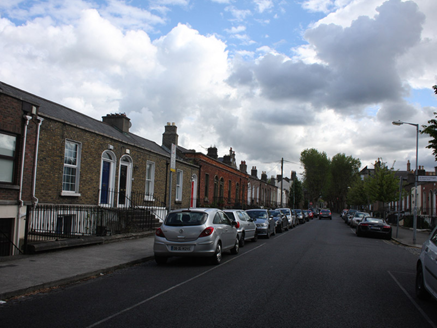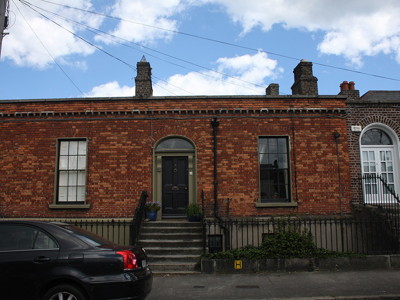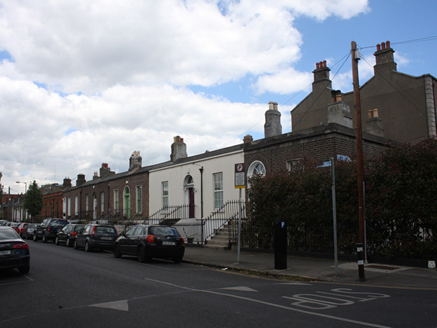Survey Data
Reg No
50110316
Rating
Regional
Categories of Special Interest
Architectural, Artistic
Original Use
House
In Use As
House
Date
1870 - 1890
Coordinates
315514, 232973
Date Recorded
19/05/2017
Date Updated
--/--/--
Description
Terraced two-bay single-storey house over basement, built c. 1880, as one of terrace of three. Pitched slate roof with terracotta ridge tiles, hidden behind red brick parapet having cut granite coping and red brick cornice with corbelled brick stringcourse. Brown brick chimneystacks having clay pots, cast-iron rainwater goods. Red brick, laid in Flemish bond, to walls, cut granite plinth course over lined-and-ruled rendered basement wall. Square-headed window openings with rendered reveals and granite sills, having six-over-six pane, four-over-four pane, and one-over-one pane timber sliding sash windows. Some timber panelled shutters visible to interior. Cast-iron railings to basement windows. Elliptical-headed door opening with moulded render surround. Doorcase comprising panelled pilasters having fluted consoles supporting carved cornice. Plain fanlight. Timber panelled door. Granite steps with cast-iron bootscrape to platform, cast-iron railings. Cast-iron railings on granite plinth wall enclosing basement area.
Appraisal
This house forms part of a group with a shared parapet height, form and fabric, creating a pleasing sense of continuity in the streetscape. The use of vivid brick distinguishes this terrace from its neighbours. Moulded brickwork, which lends subtle decorative interest to the façade, attests to the late Victorian date of construction. Synge Street forms part of an early Victorian neighbourhood situated west of Camden Street. It began to be developed when P. Monks built there in the 1850s, and many of the street's houses were built in the 1860s.





